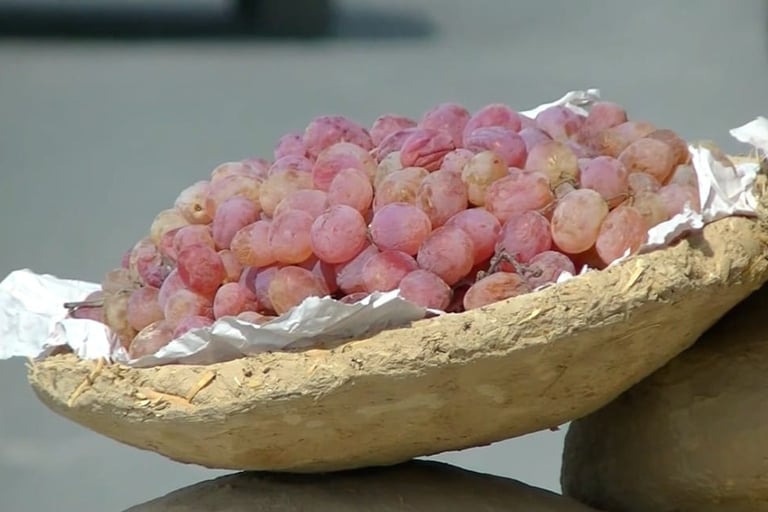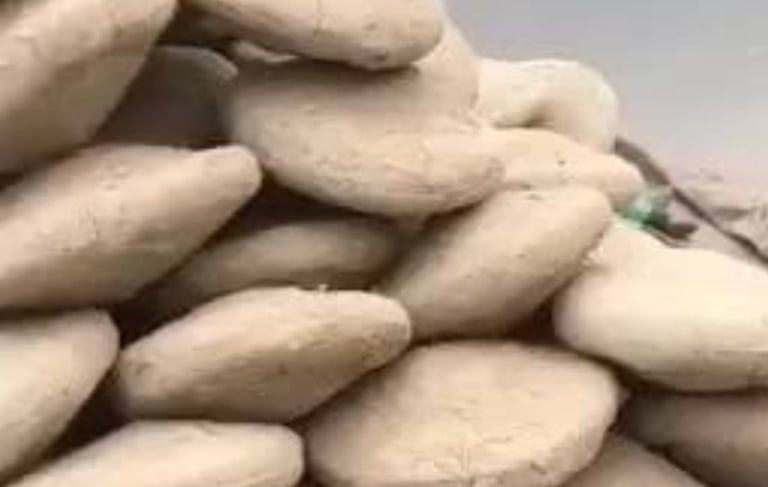Kangina: The Traditional Afghan Method of Grape Preservation
Amid Afghanistan’s sun-drenched vineyards, where grapes flourish in abundance, an ancient wisdom ensures their freshness long after harvest. The kangina, a time-honoured preservation method, transforms earth and straw into nature’s own storage, sealing the essence of summer for seasons to come.
MINDMUSE


Afghanistan, with its fertile valleys and diverse climates, has long been a hub for grape production, contributing significantly to the country’s agricultural output. The country's unique geography, which ranges from lush foothills to arid plains, creates an ideal environment for growing a wide variety of grapes. These grapes, particularly from regions like Kabul, Paktia, and Herat, are not only prized for their flavour and quality but are also a vital economic resource. As one of the top agricultural exports, grapes play a key role in Afghanistan's economy, supporting farmers and providing a crucial source of income.
However, the life cycle of grapes extends beyond the harvest season. To maximize the economic value of their crop, Afghan farmers have long relied on traditional preservation methods. The preservation of grapes allows them to be stored and sold during the off-season when fresh fruit is scarce and prices are higher. This practice not only ensures a steady income for farmers but also helps in managing the annual cycle of grape production, reducing the pressure of excess supply during peak harvest times. One such method, deeply rooted in Afghan tradition, is the use of the kangina—a simple yet ingenious storage vessel made from mud and straw.
Crafting the Kangina
The creation of the kangina begins with the careful preparation of its framework. Straw is woven into two bowl-like shapes, which are then fused together to form a spherical structure with a slightly flattened top and bottom. This woven base forms the kangina’s primary structure, providing both strength and stability while remaining light enough for handling.
Once the basic framework is complete, mud—sourced from the local landscape—is applied in layers over the straw. This mud layer hardens in the sun, creating an airtight seal that ensures the grapes are stored in optimal conditions. The insulating properties of the mud regulate the temperature inside the kangina, keeping the grapes cool and protected from external factors such as heat, moisture, and pests.
Once the kangina is fully crafted and dried, it is used to store freshly harvested grapes. The grapes are carefully packed inside the container, and the opening is sealed with additional mud, completing the airtight seal. This process helps preserve the freshness of the fruit by protecting it from the elements and preventing spoilage.
The sealed kangina is then stored in a cool, dry location, away from direct sunlight. The insulated, airtight nature of the container helps maintain the grapes’ quality over an extended period. The mild, consistent temperature inside the kangina keeps the grapes fresh, allowing them to be stored for months until they are needed. This method not only ensures that the grapes remain edible but also enables farmers to sell them during the off-season when market prices are higher.
Little jewels of nature, bursting with sweetness in every bite!


Sealing nature’s sweetness, the Afghan way.
Cracked open, yet freshness sealed within. Courtesy: Wikipedia


A Sustainable Tradition Rooted in the Land
What makes the kangina so remarkable is its simplicity and sustainability. Made from local materials like straw and mud, it offers an eco-friendly and cost-effective alternative to modern preservation techniques. The method requires no electricity, refrigeration, or artificial chemicals—just the earth’s natural elements. Thus, the kangina highlights the ingenuity of Afghan farmers, who, for generations, have honed their craft to ensure that their crops remain viable even after the harvest season. By preserving grapes, farmers not only extend their produce’s shelf life but also stabilize their income, allowing them to weather periods of low agricultural yield or price fluctuations.
In a world increasingly driven by modern technology, the kangina stands as a testament to the wisdom of traditional practices—simple, sustainable, and effective. As Afghan farmers continue to preserve their crops in this timeless manner, the kangina remains a key part of their agricultural heritage, helping them adapt to the rhythms of nature and secure a livelihood for generations to come.
